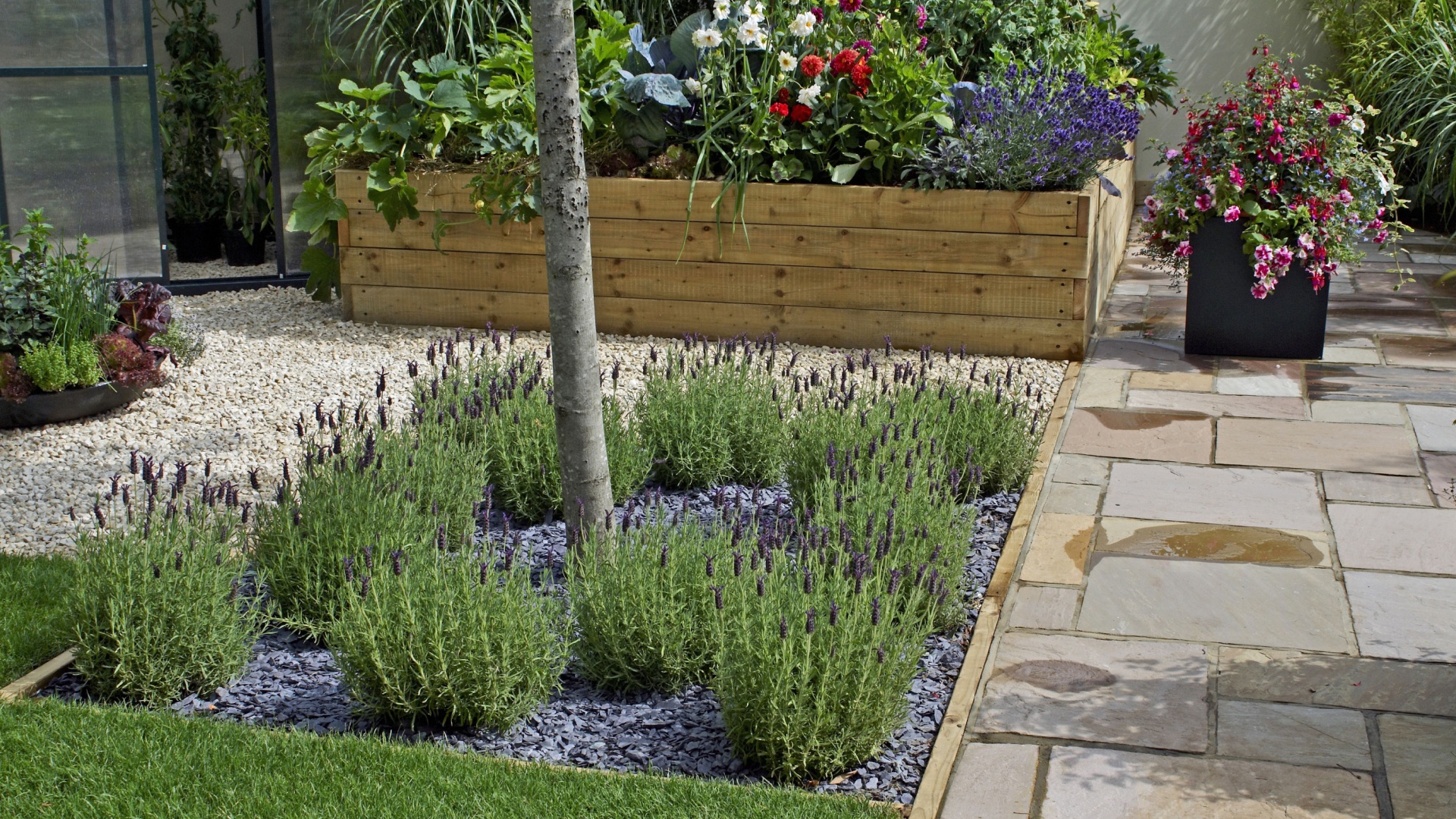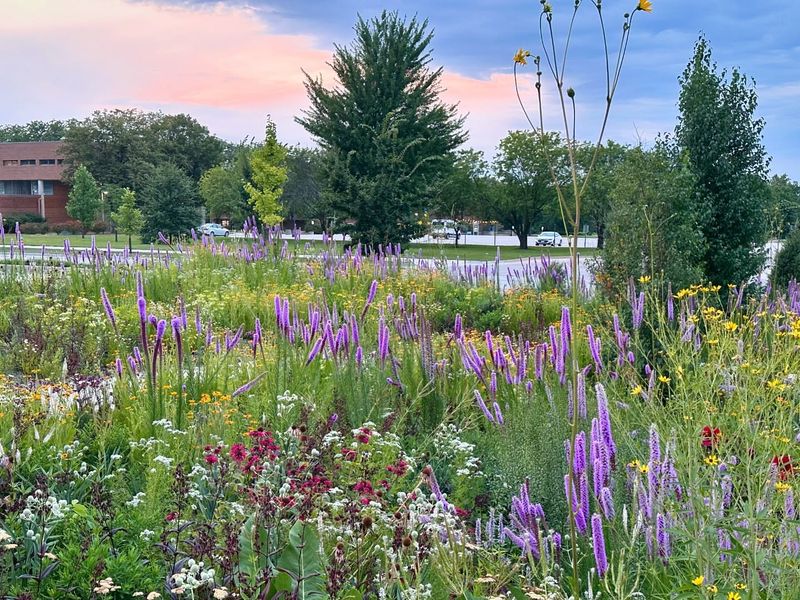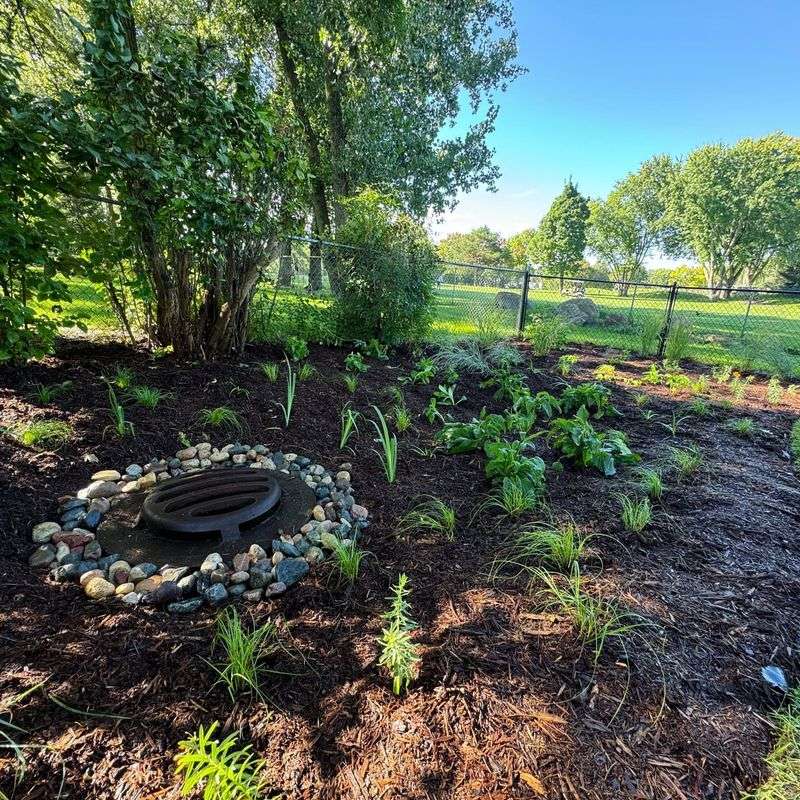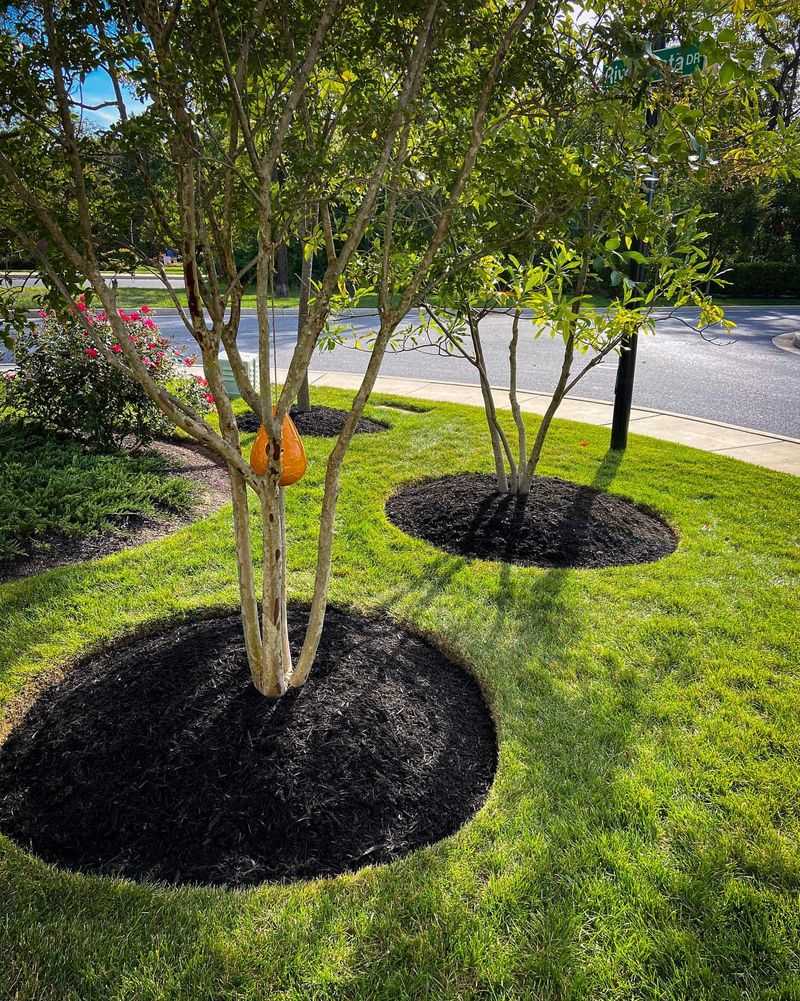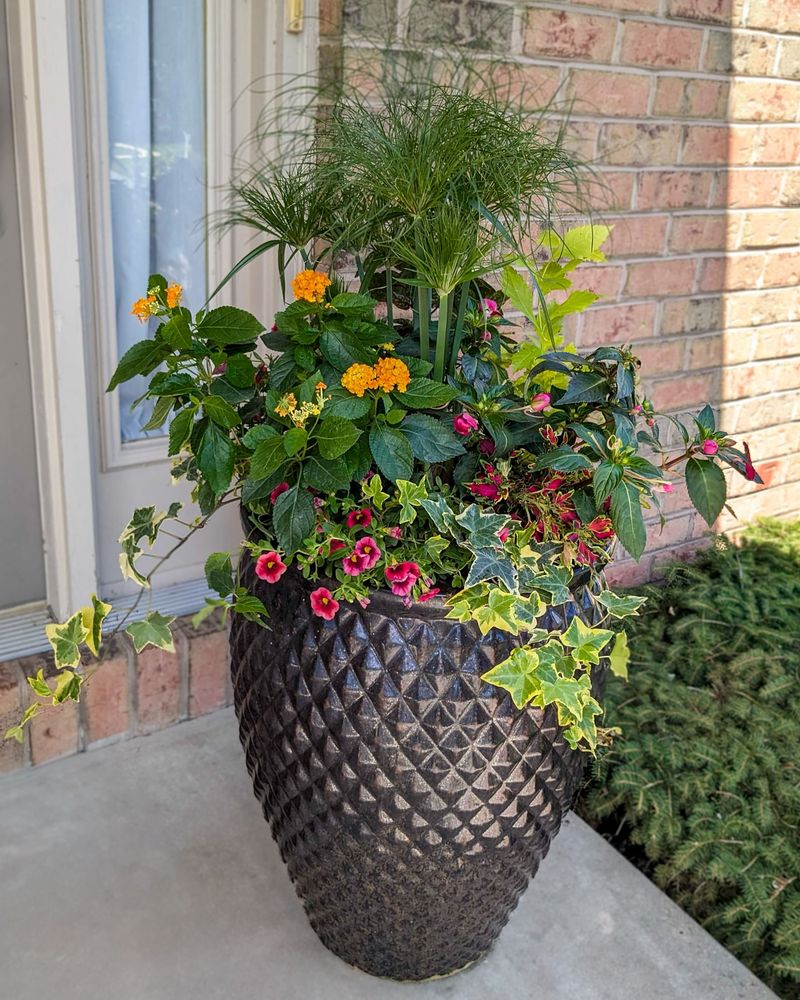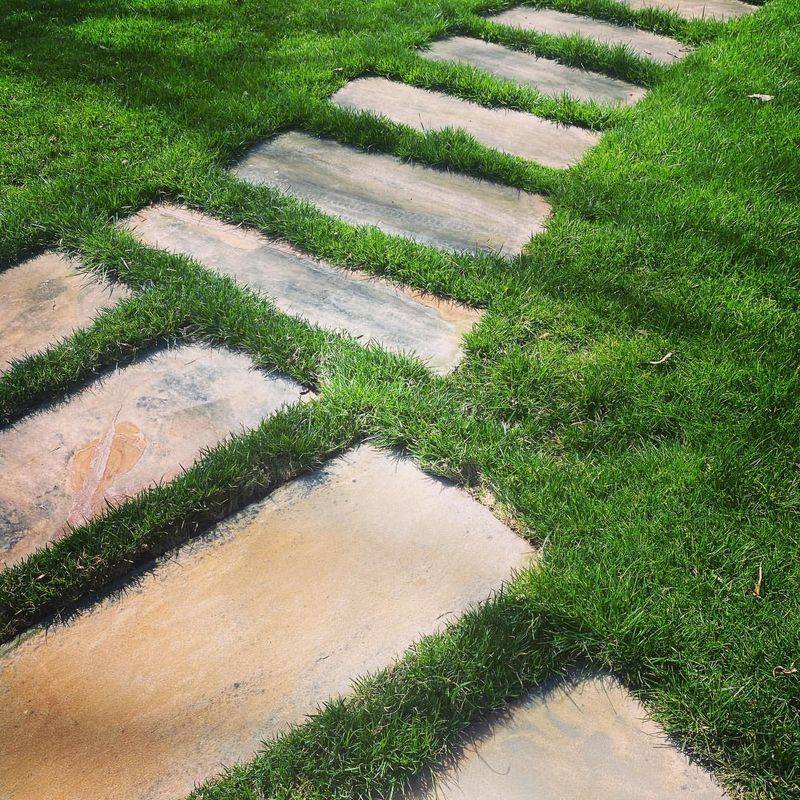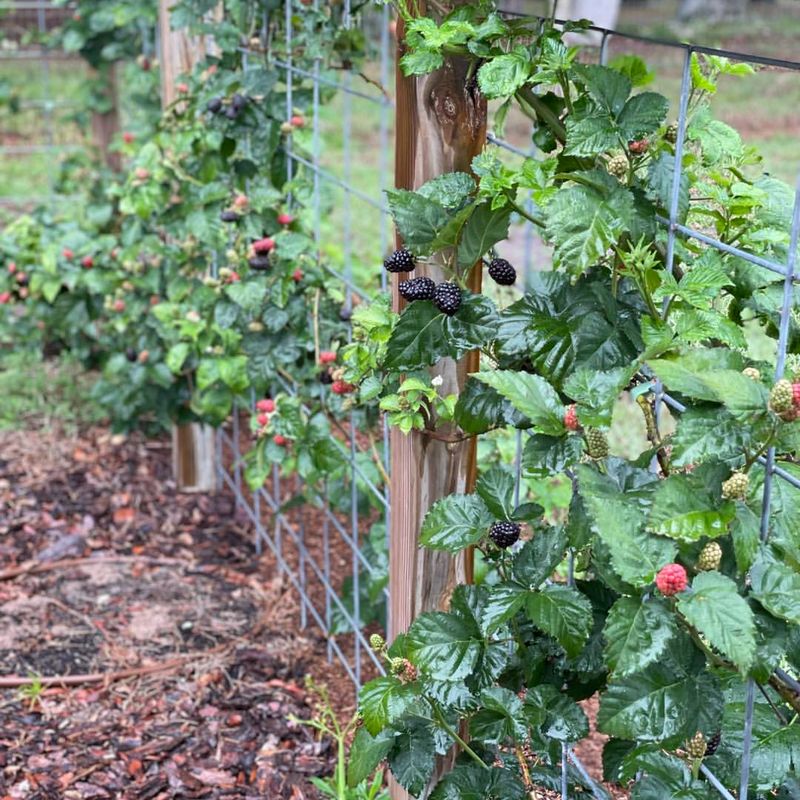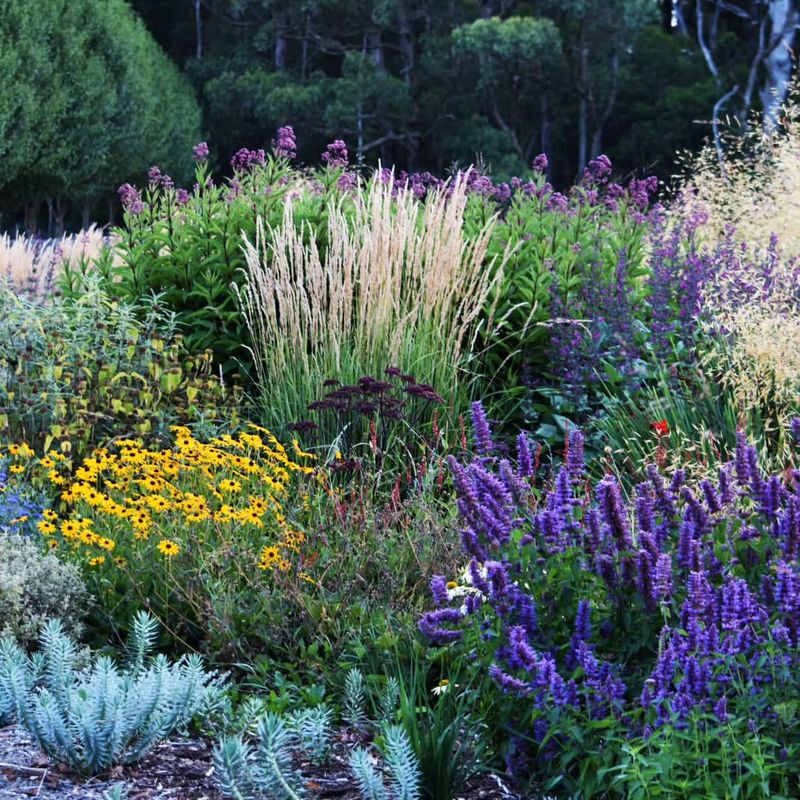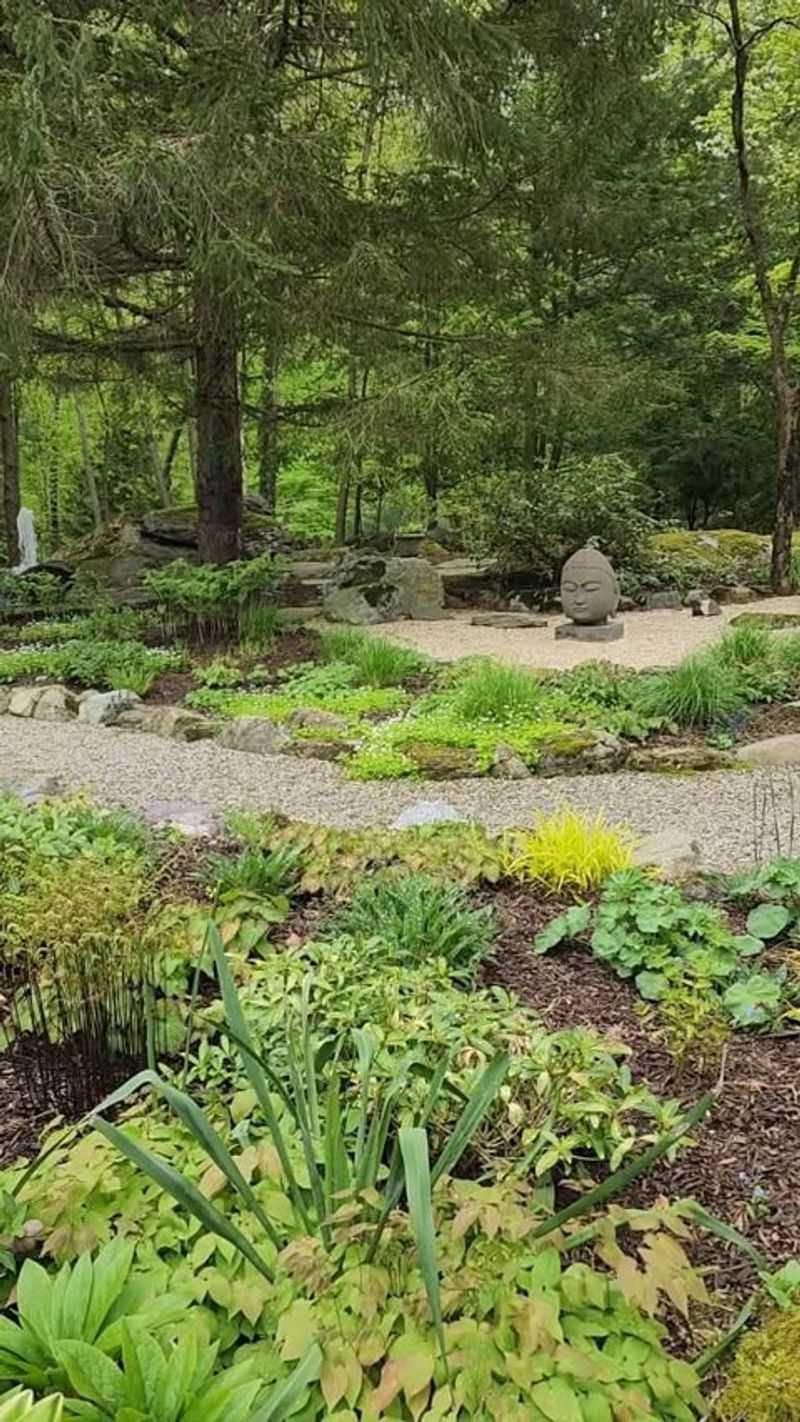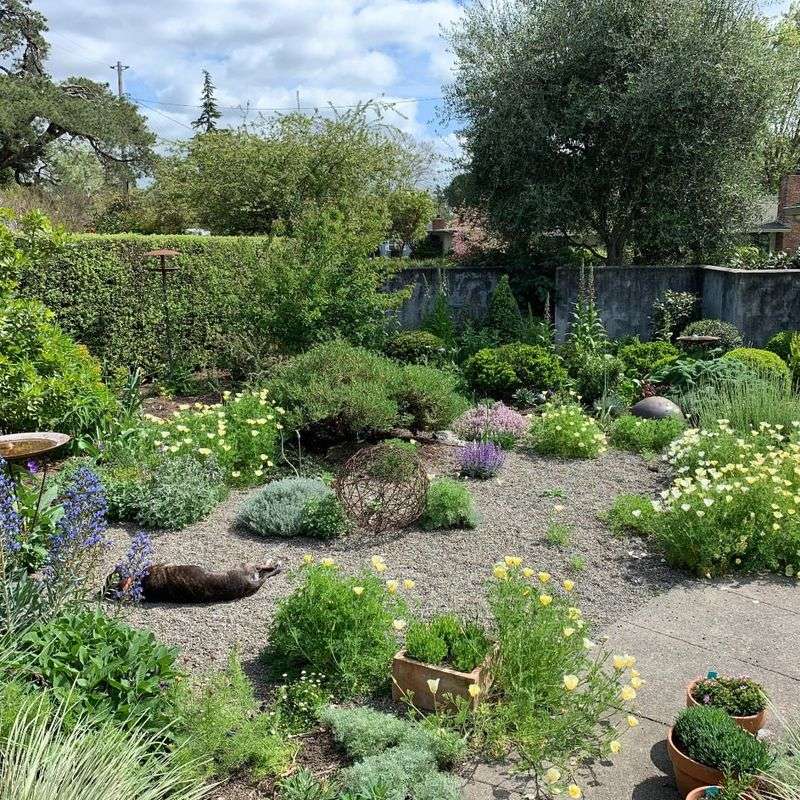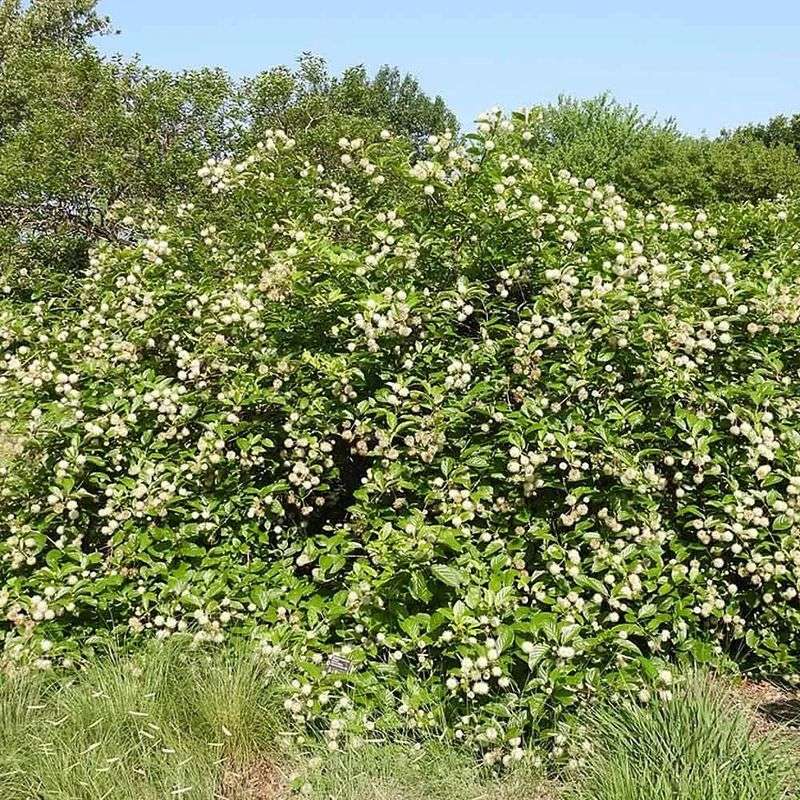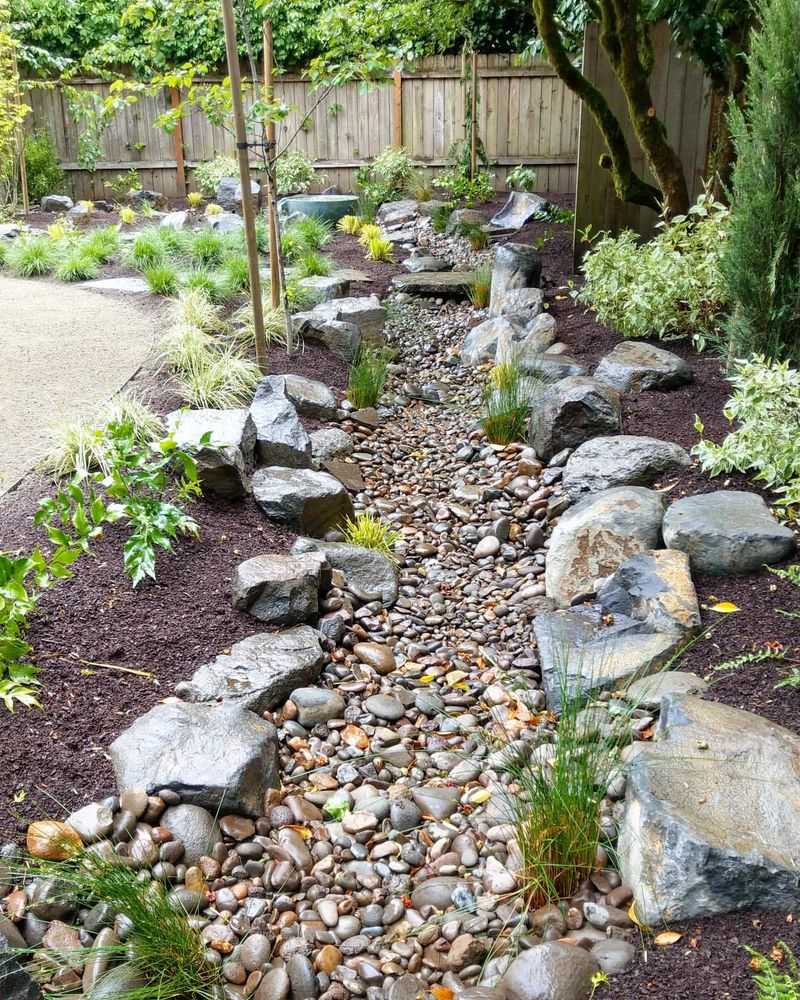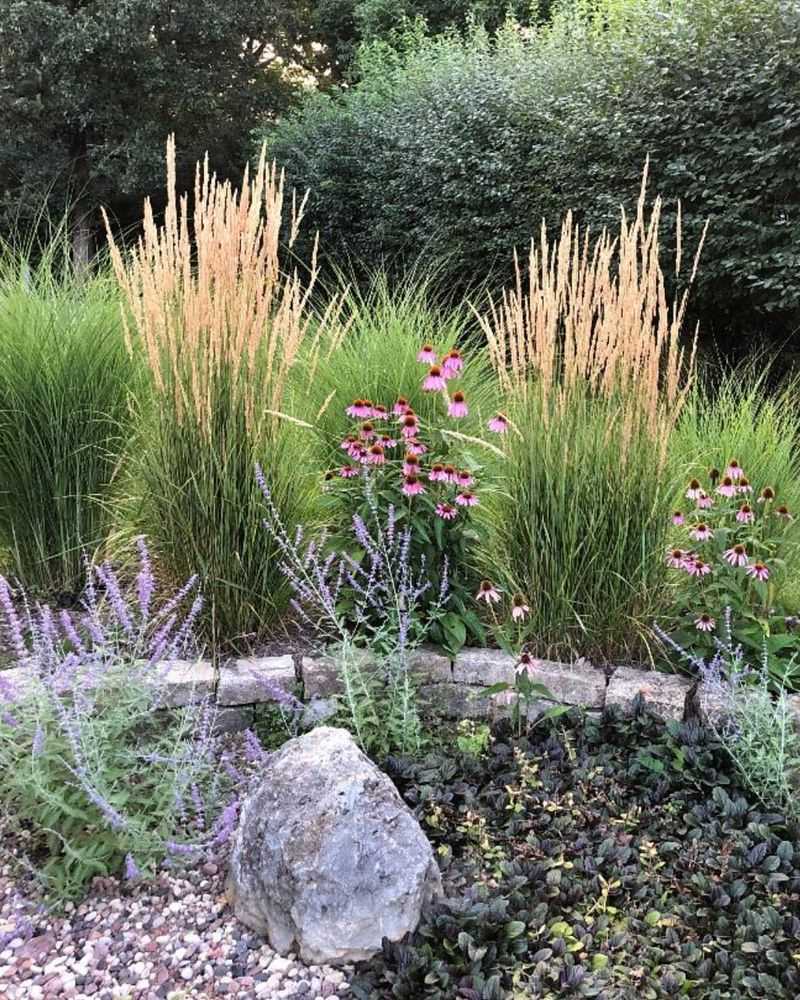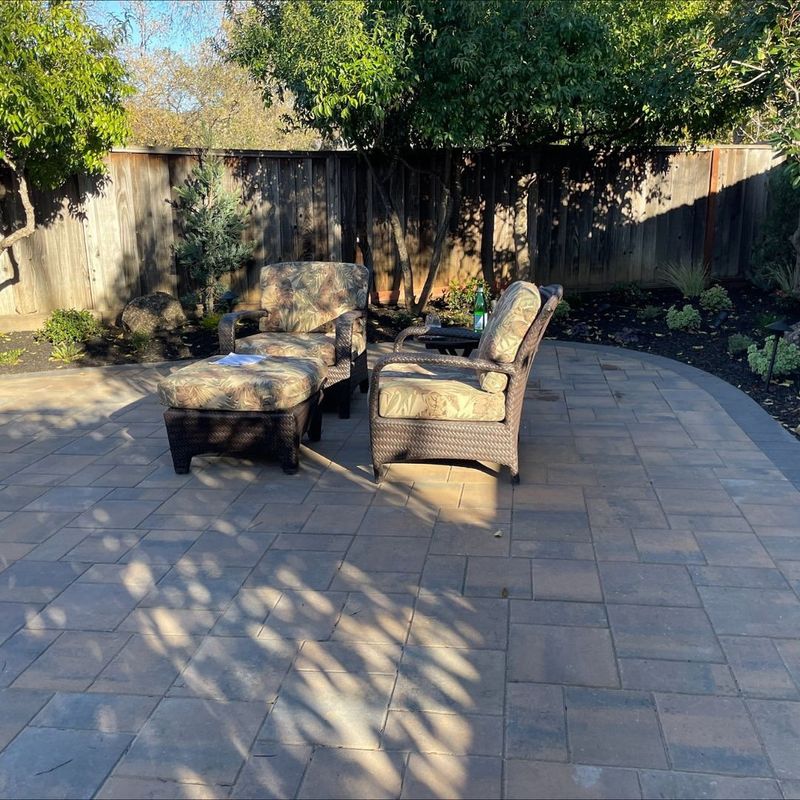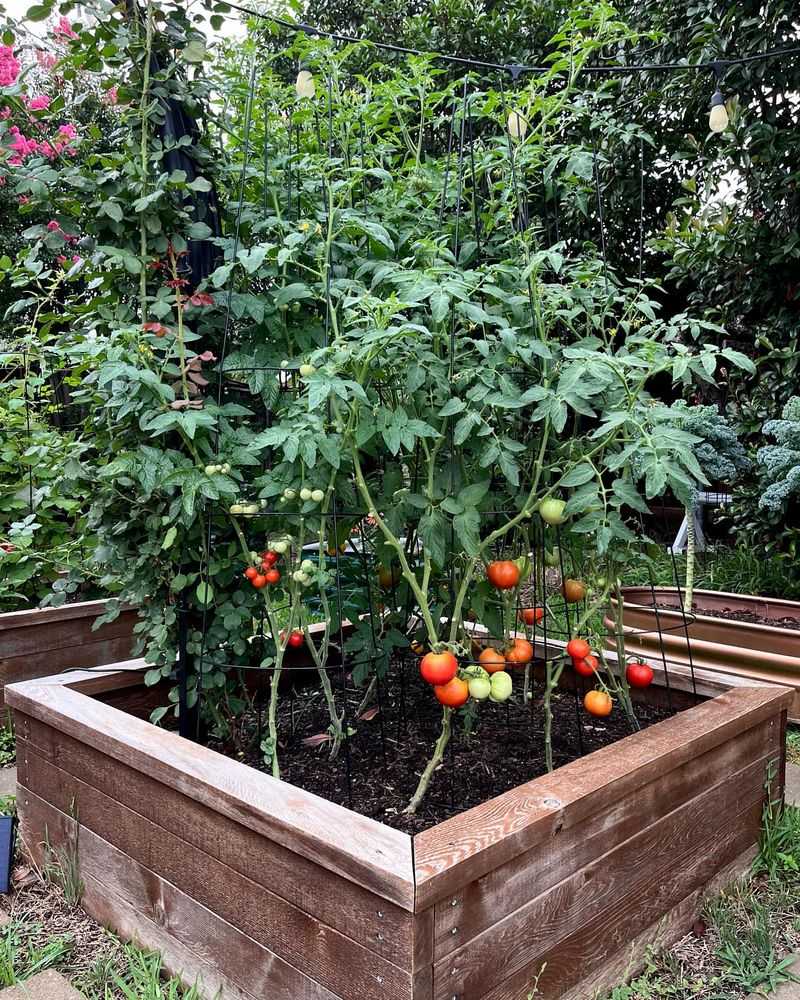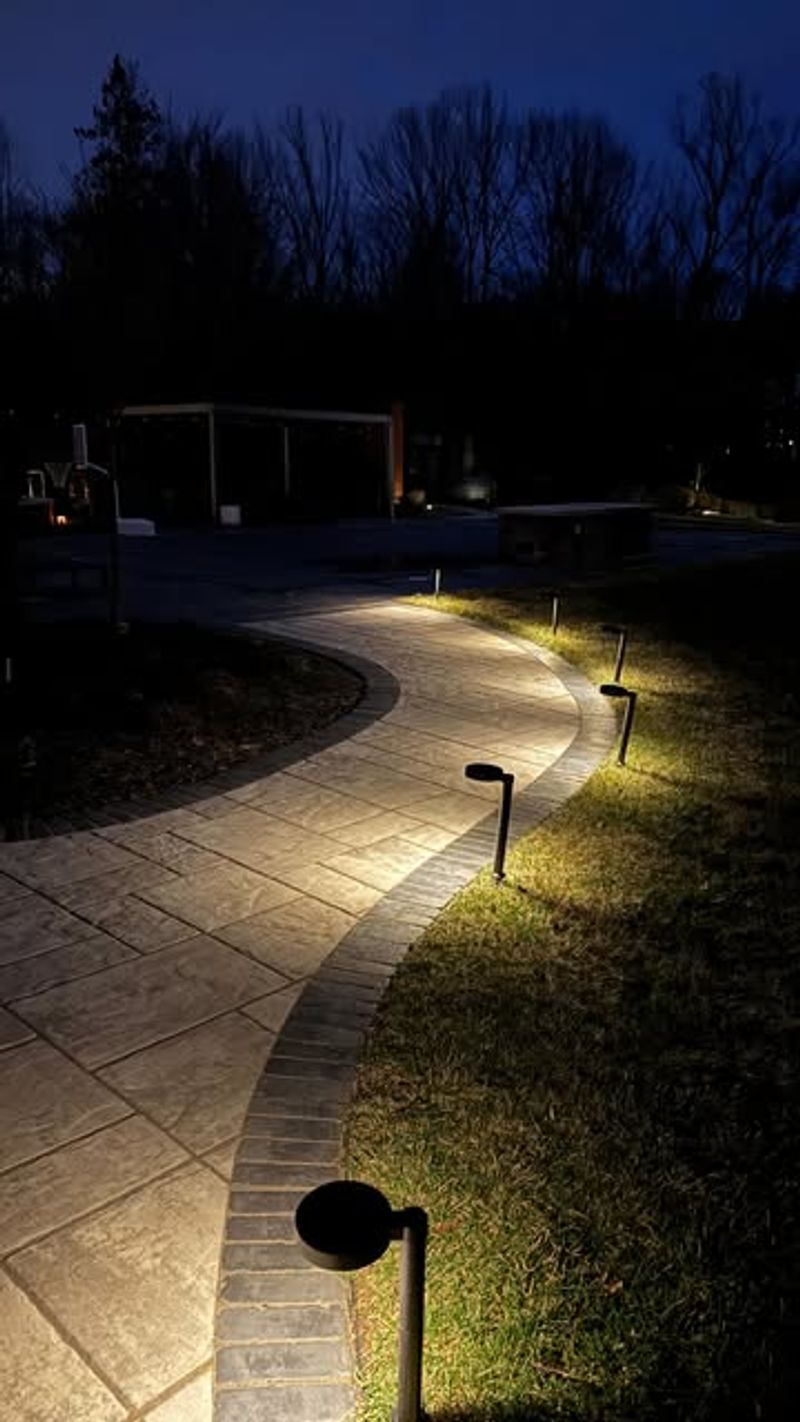Starting fresh with a new home in Illinois? Your yard doesn’t need a pro-level makeover to shine. With a few easy landscaping ideas, you can boost curb appeal, add seasonal color, and create outdoor spaces that feel like home.
These beginner-friendly tips are low on stress, light on cost, and big on impact—perfect for planting roots without getting overwhelmed.
1. Native Prairie Garden
Transform a section of your yard into a miniature Illinois prairie with native wildflowers and grasses. Black-eyed Susans, purple coneflowers, and big bluestem grass thrive in our climate with minimal maintenance.
Once established, these plants need little watering and create habitat for local butterflies and birds. The best part? Native gardens typically require less fertilizer and fewer pesticides than traditional lawns.
2. Rain Garden Solution
Got a soggy spot in your yard? Convert that troublesome area into a beautiful rain garden! Select moisture-loving native plants like blue flag iris, swamp milkweed, and fox sedge that naturally absorb excess water.
Rain gardens prevent erosion, reduce standing water that attracts mosquitoes, and filter pollutants before they reach waterways. Your neighbors will marvel at how you transformed a problem area into an attractive landscape feature.
3. Mulched Tree Rings
Create clean, defined circles around trees using mulch – an instant yard upgrade! Measure 3-4 feet from each trunk, remove grass within that circle, and add 2-3 inches of mulch (avoid piling against the trunk).
Mulched rings reduce mowing hassles, eliminate trunk damage from weed trimmers, and help trees retain moisture. Choose natural mulch like shredded hardwood that will break down over time and feed the soil.
4. Four-Season Container Garden
Brighten your porch or patio with containers that look good year-round. Start with evergreen shrubs like boxwood or dwarf spruce as anchors, then swap seasonal plants around them as weather changes.
Spring tulips give way to summer petunias, followed by fall mums and winter red-twig dogwoods. Large containers insulate roots better than small ones, helping plants survive Illinois temperature swings. Choose frost-resistant ceramic or resin pots.
5. Simple Stone Path
Connect areas of your yard with a charming stepping stone path – perfect for beginners! Flat limestone pieces reflect Illinois’ natural geology and provide stable footing through garden beds or lawn areas.
Lay stones directly on compacted soil about 24 inches apart (measure your natural stride). Fill gaps with creeping thyme or Irish moss for a magical effect. The stones prevent muddy footprints during Illinois’ rainy seasons while adding structure to your landscape.
6. Berry Bush Border
Plant a row of berry bushes along your property line for delicious privacy! Blueberries, raspberries, and blackberries thrive in Illinois and provide three-season interest: spring flowers, summer berries, and fall color.
Most berry bushes reach 4-6 feet tall – perfect for defining spaces without blocking views. Plant them 3-4 feet apart in full sun. The sweet reward of fresh berries makes this beginner-friendly project especially satisfying during summer months.
7. Layered Perennial Beds
Create eye-catching flower beds by planting in layers – tall plants in back, medium in middle, short in front. Choose perennials that bloom at different times: spring daffodils, summer daylilies, fall asters.
Group plants in odd-numbered clusters (3 or 5 of each) for natural-looking drifts. Illinois-friendly choices include coreopsis, Russian sage, and autumn joy sedum. Once established, these beds need only seasonal cleanup and occasional dividing.
8. Shade-Loving Woodland Garden
Those shady spots under mature trees aren’t lawn wastelands – they’re perfect for woodland gardens! Hostas, ferns, and astilbe create lush ground cover in areas where grass struggles.
Add height with native understory trees like redbud or serviceberry. Woodland gardens need minimal watering once established and provide cool retreats during humid Illinois summers. Enhance the natural feel with a few moss-covered rocks or fallen logs.
9. Gravel Garden Bed
Create a low-maintenance garden bed using decorative gravel instead of mulch. Install landscape fabric first, then add 2-3 inches of pea gravel or crushed limestone around drought-tolerant plants like Russian sage, sedum, and ornamental grasses.
Gravel gardens drain beautifully during Illinois’ wet springs and stay attractive through dry summer periods. The light-colored stone reflects heat to plant roots and deters many common weeds. Bonus: no annual mulch replacement needed!
10. Bird-Friendly Shrub Corner
Attract colorful visitors by creating a bird-friendly corner with native shrubs. Serviceberry, American cranberrybush viburnum, and elderberry provide natural food sources and nesting spots for Illinois birds.
Plant shrubs in a loose triangle with the tallest at the back. Add a simple birdbath at varying heights for different species. The shrubs’ changing seasons of flowers, berries and fall color make this corner interesting year-round while supporting local wildlife.
11. DIY Dry Creek Bed
Solve drainage problems stylishly with a dry creek bed that channels water away from your foundation. Dig a shallow, winding trench and line it with landscape fabric before adding various sizes of river rock.
Place larger boulders along the edges for natural appeal. During Illinois downpours, the creek actually functions! In dry times, it remains an attractive landscape feature. Plant moisture-loving natives along the edges to complete the natural look.
12. Ornamental Grass Groupings
Create dramatic landscape focal points with ornamental grass groupings. Prairie dropseed, switchgrass, and little bluestem provide movement, sound, and winter interest when other plants have faded.
Plant odd-numbered clusters (3, 5, or 7) for natural-looking arrangements. Most grasses thrive in full sun and tolerate Illinois’ clay soils. Their root systems help prevent erosion on slopes, and their swaying seed heads catch morning frost for winter beauty.
13. Weekend Paver Patio
Create an instant outdoor living space with a simple paver patio – doable in a weekend! Choose interlocking concrete pavers that don’t require mortar, just a level sand base and edging to keep them in place.
A 10×10 foot patio provides room for a small table and chairs. The pavers withstand Illinois’ freeze-thaw cycles better than poured concrete. Add container plants around the edges to soften the look and create a cozy outdoor room.
14. Raised Vegetable Beds
Grow your own produce with simple raised beds – perfect for beginners! Four-foot-wide cedar boards create durable beds that warm up earlier in Illinois’ spring and drain well during wet periods.
Fill with a mix of topsoil, compost, and peat moss for ideal growing conditions. Start with easy crops like tomatoes, peppers, and zucchini. The defined edges keep garden areas neat and accessible, while the raised height means less bending and fewer weeds.
15. Solar Lighting Path
Add evening magic to your landscape with solar path lights – no electrical experience required! Simply press stake lights into the ground along walkways, around patios, or to highlight special plants.
Modern solar lights charge even on cloudy Illinois days and automatically illuminate at dusk. Choose metal fixtures over plastic for durability through midwest winters. The gentle lighting improves safety while creating a welcoming atmosphere for evening enjoyment of your yard.

